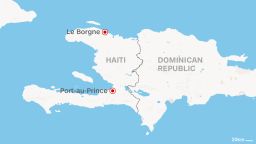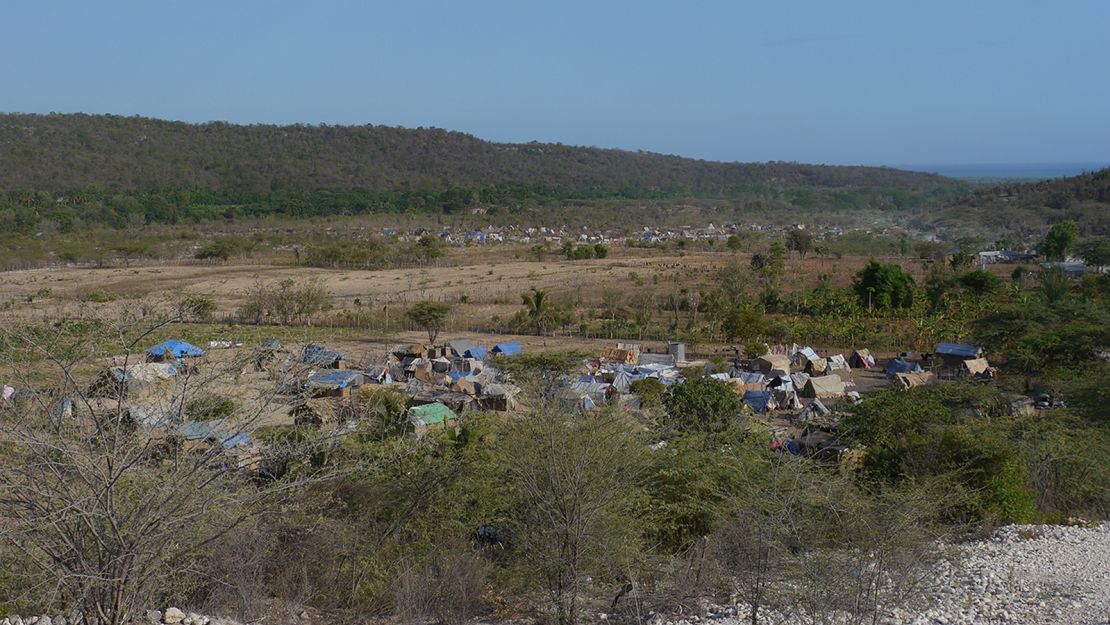Story highlights
Observers are concerned about a few but growing tent cities in Haiti
Haitians who lived illegally in the Dominican Republic are returning amid deportation fears
Among the settlers are Dominicans who were born to undocumented Haitian parents
Concerns of a humanitarian emergency in Haiti are mounting as a growing number of Haitians returning to their country from neighboring Dominican Republic are living in rapidly growing tent cities with little resources.
The Haitian government and international organizations have identified at least three tent cities that have sprung up in drought-stricken southern Haiti, near the border. Here, the newly returned – or newly deported – Haitians are clearing land and living in makeshift camps with no amenities.
Two of the sites, located north of the Haitian border town of Anse-a-Pitres, have tripled in population in the past month, according to estimates of aid workers who have visited.
A third camp has been confirmed farther north along the border in Malpasse.
With the reliance on donated food and water scarce, local and international aid agencies worry that without swift action, these camps could swell and desperation rise.
Opinion: Prevent humanitarian tragedy in Dominican Republic
One island, two nations, a long quarrel

For years, Haiti and the Dominican Republic – two nations that share one island – have quarreled over the issue of migration and the strict immigration enforcement efforts spearheaded by the Dominican government.
Much of the fight has been about the effects of a Dominican law to require all undocumented immigrants to get “regularized” or face deportation. Simultaneously, another registration law was enforced to restore the status of tens of thousands of Dominicans of Haitian descent who were stripped of their birthright citizenship after a 2013 court ruling.
Want to know more about Haiti? Get the fast facts
Despite criticism from the international community, the Dominican government has stood by its immigration laws. They were designed to be solutions to two problems: Dealing with the large number of undocumented immigrants living in the Dominican Republic and restoring the rights of the more than 200,000 Dominicans who lost their citizenship as a result of the 2013 court ruling.
On a recent trip through both countries, many Haitians told CNN that they favored a process to gain legal status and to register with the government. But, most also said that the requirements set out in the laws to obtain legal status are too onerous.
Especially among the poorest Haitian immigrants, the cost and time required to gather the documents is too much for many. With the deadlines passed, fears of potential mass deportations have pressured many Haitians – including some born in the Dominican Republic – to leave the country voluntarily.
No massive operations to detain and remove migrants has come to pass, but the fear lingers.
North and south

This flow of people back into Haiti so far appeared to have been manageable. But the discovery of tent cities popping up and growing in Haiti’s south is worrisome, aid agencies say.
Kara Lightburn, the executive director of the volunteer group Social Tap, has made two visits to the camps near Anse-a-Pitres, one on June 28 and a second on July 20. The camps she visited grew about three times in population between those dates, she said.
A majority of the Haitians who emigrated to the Dominican Republic in decades past hail from the north of the country. Those who find themselves deported or voluntarily returning to the south part of the country have arrived in a place where the economy is depressed and a monthslong drought already taxed the local residents.
“They’re coming into an environment that has no resources, and they don’t have that next stepping stone to reunite. It’s lacking that one connector, the piece of that puzzle,” Lightburn said.
In the north crossing between the two countries, in contrast, the flow of returnees has so far been successfully absorbed by the local communities, in part because the returnees arriving in the north are more likely to have familial resources nearby.
In the south, that is not the case.
‘It’s worsening’
“For me, it’s worsening,” said Jean-Sebastian Jerome, the national registration officer for the International Organization for Migration in Haiti.
The Haitian government, Jerome said, is reluctant to call the tent cities “refugee camps” and for now prefers the word “sites.” The distinction is not insignificant, as the government prefers to handle the situation on its own, and a refugee crisis invites international attention and intervention.

At a coordination meeting last week, government representatives told the IOM and other international agencies that they have a plan to relocate the people living in the camps, Jerome said. The details of the plan will be discussed at a follow-up meeting on Wednesday, he said.
Lack of coordination means that in some places, there is no one on the Haitian side prepared to receive the returnees or deportees, Haitian Foreign Affairs Minister Lener Renauld said.
“In Anse-a-Pitres, it’s a mess, you know. Sometimes you don’t even know how many are down there,” he said.
The mayor of Anse-a-Pitres is looking for funding to provide cash to the those living in the camps to help them reach their home cities, said Silver Decayette, who spoke with the mayor this month.
Decayette is a native of Anse-a-Pitres and now lives in Jacmel, where he runs several businesses.
“Miserable,” he said of what he saw at the camps. The local churches were passing out cards to the settlers that they could exchange for rice and beans, Decayette said.
The recently returned Haitians in these camps did not appear to have reached a point of desperation, Decayette said, but he wondered what could happen if a plan to relocate this population drags on for weeks or longer.
“What can happen is people are going to die,” he said. “They have no food, they have no water. How are they going to survive there?”
CNN’s Mariano Castillo reported from Haiti and the Dominican Republic with support from the International Center for Journalists.

